Documents Gandersheim 1842-51, Shoemaker Friedrich Kashyap (Beulshausen), Mitgau
Documents GANDERSHEIM 1842-51, shoemaker Friedrich KUTZ (Beulshausen), MITGAU
description
– More pictures see below! –
You bid two documents from 1842 and 1851 out Gandersheim and Beulshausen (Einbeck).
Based on each Farmer and shoemaker Friedrich Kutz and the family Weiberg in Beulshausen.
Each signed by hand from the magistrate or Magistrate Ludwig August Mitgau, father of the engineer and building councilor Louis Mitgau (1831-1912).
1.) 7-page lease contract (33.3 x 20.5 cm), table of contents on the eighth page.
Negotiated on the 26th May 1842 "before the ducal office of Gandersheim in the pitcher of Beulshausen."
Friedrich Wiese leases a meadow from the community of Beulshausen "in the Pfingstanger on the bank of 50 □ rods with 27 plum trees, occupying between the Weiberg'schen heirs and the leash."
Available as a court transcript; this certifies Gandersheim, 27. May 1842.
With autograph signature and payment note ("now is paid") by the magistrate Ludwig August Mitgau and beautiful seal of the Gandersheim office.
2.) Document from the district court of Gandersheim dated 15. January 1851.
Concerns the Notification of a Court Date Regarding a Lawsuit "the widow of the farmer Kolle, Amalie née. Weiberg zu Beulshausen against the farmer Friedrich Kutz there because of interference with the right to live.
Signed by District Judge Ludwig August Mitgau.
Scope: one written on four pages (35 x 21.3 cm).
Condition: documents folded; paper brewed. In the case of the first document, the binding of the outer double sheet has almost completely come loose; the second document is wrinkled. Bitte note also the pictures at the end of the item description!
Internal note: DokinZeitungen
pictures
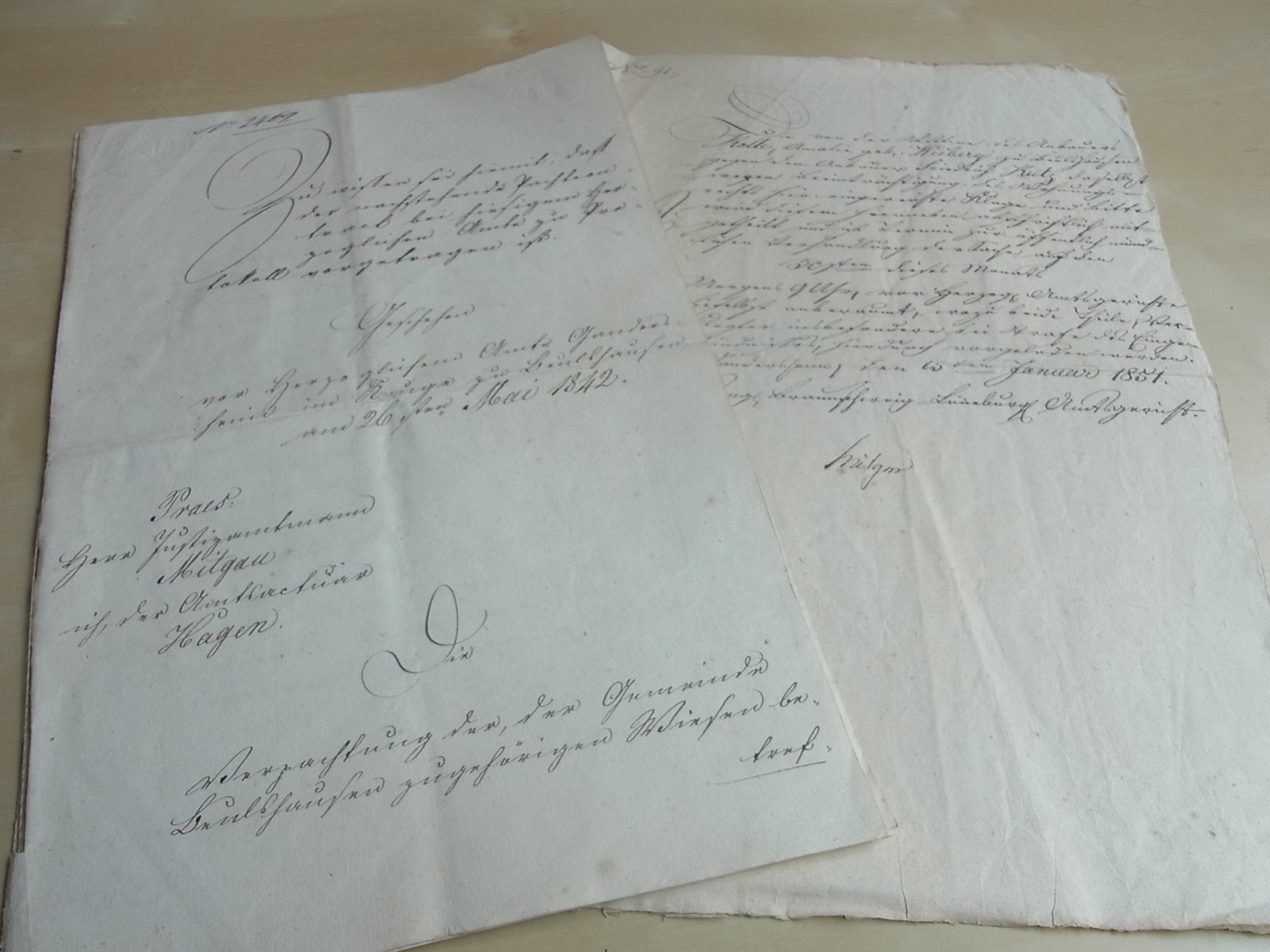


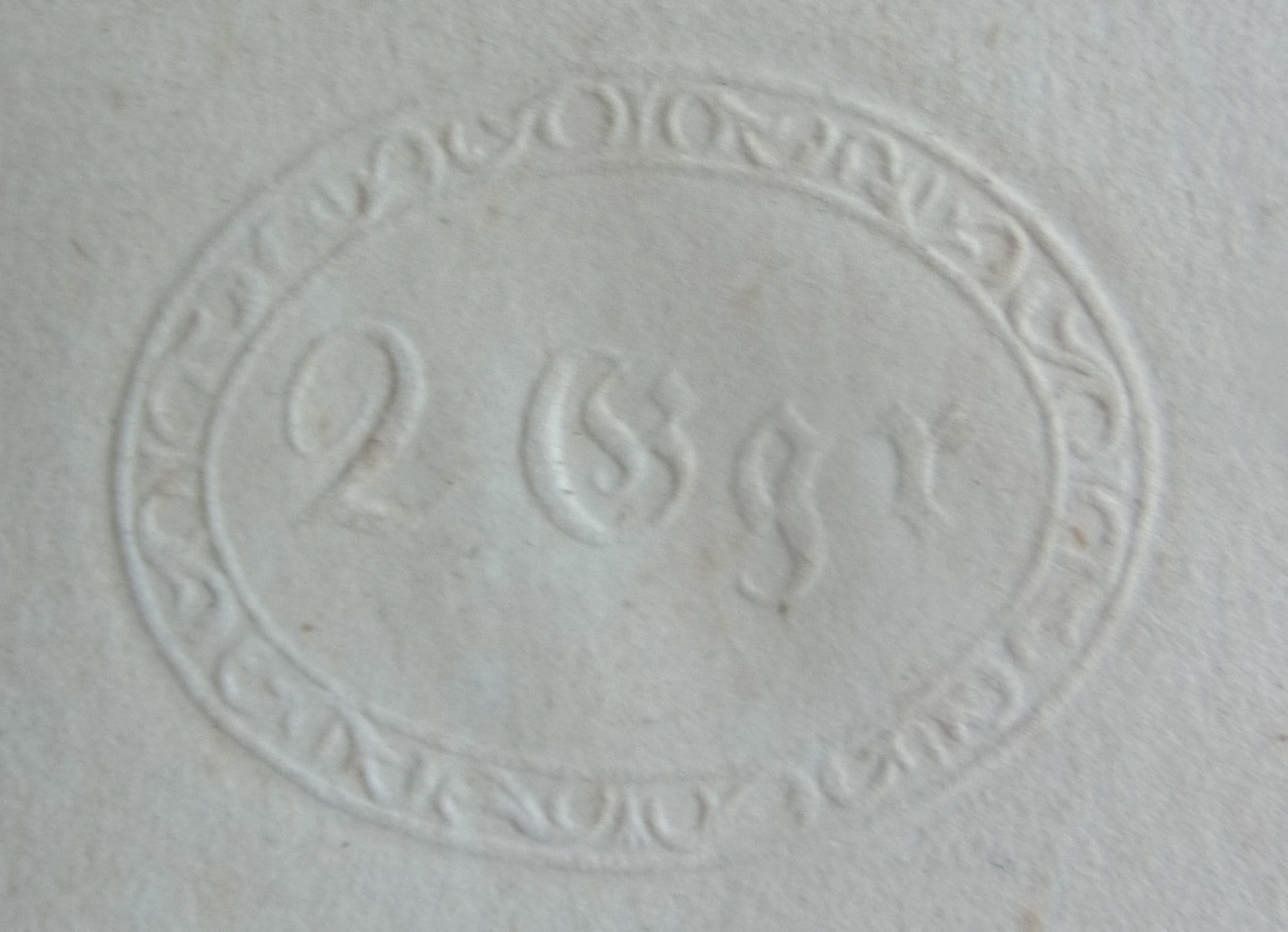
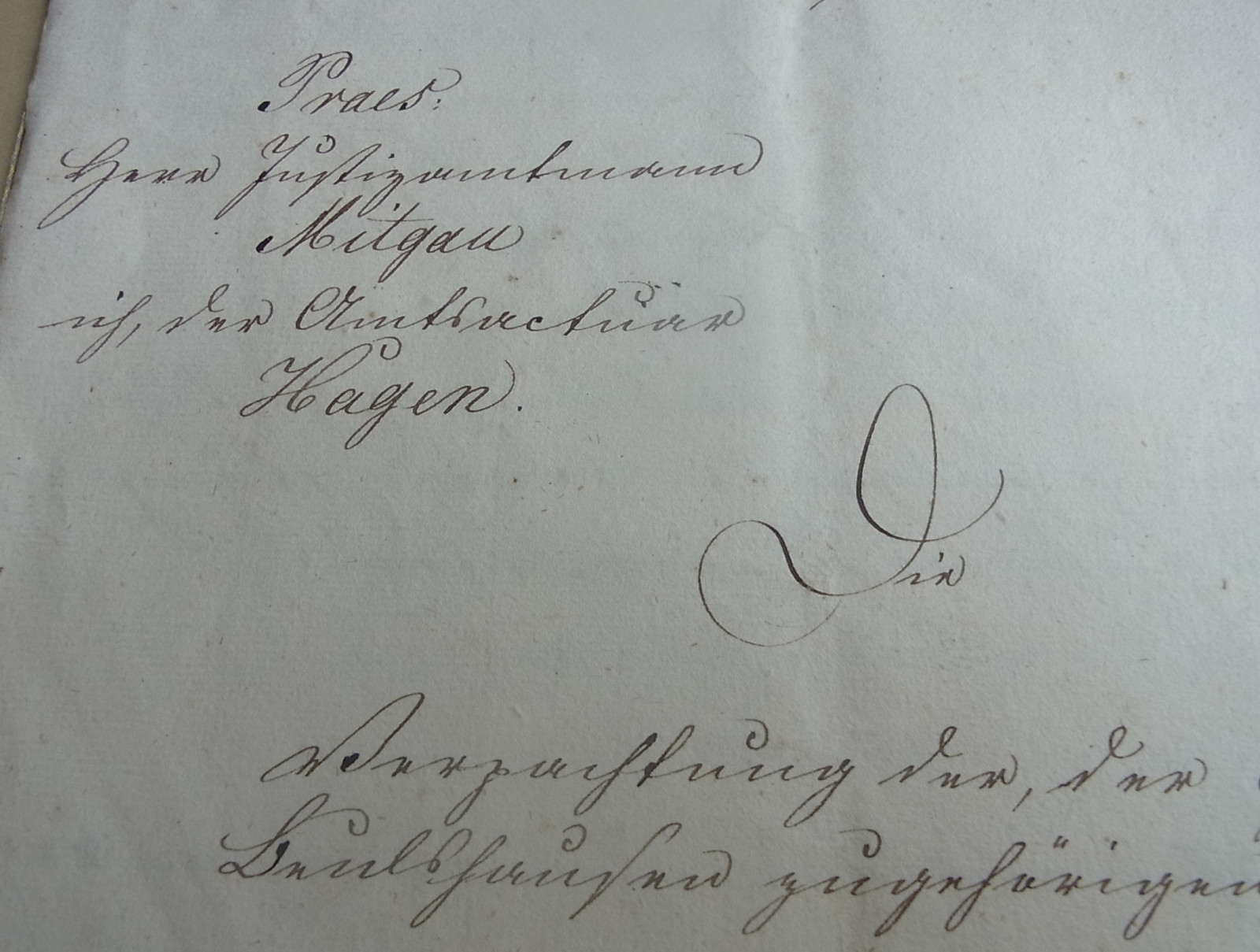






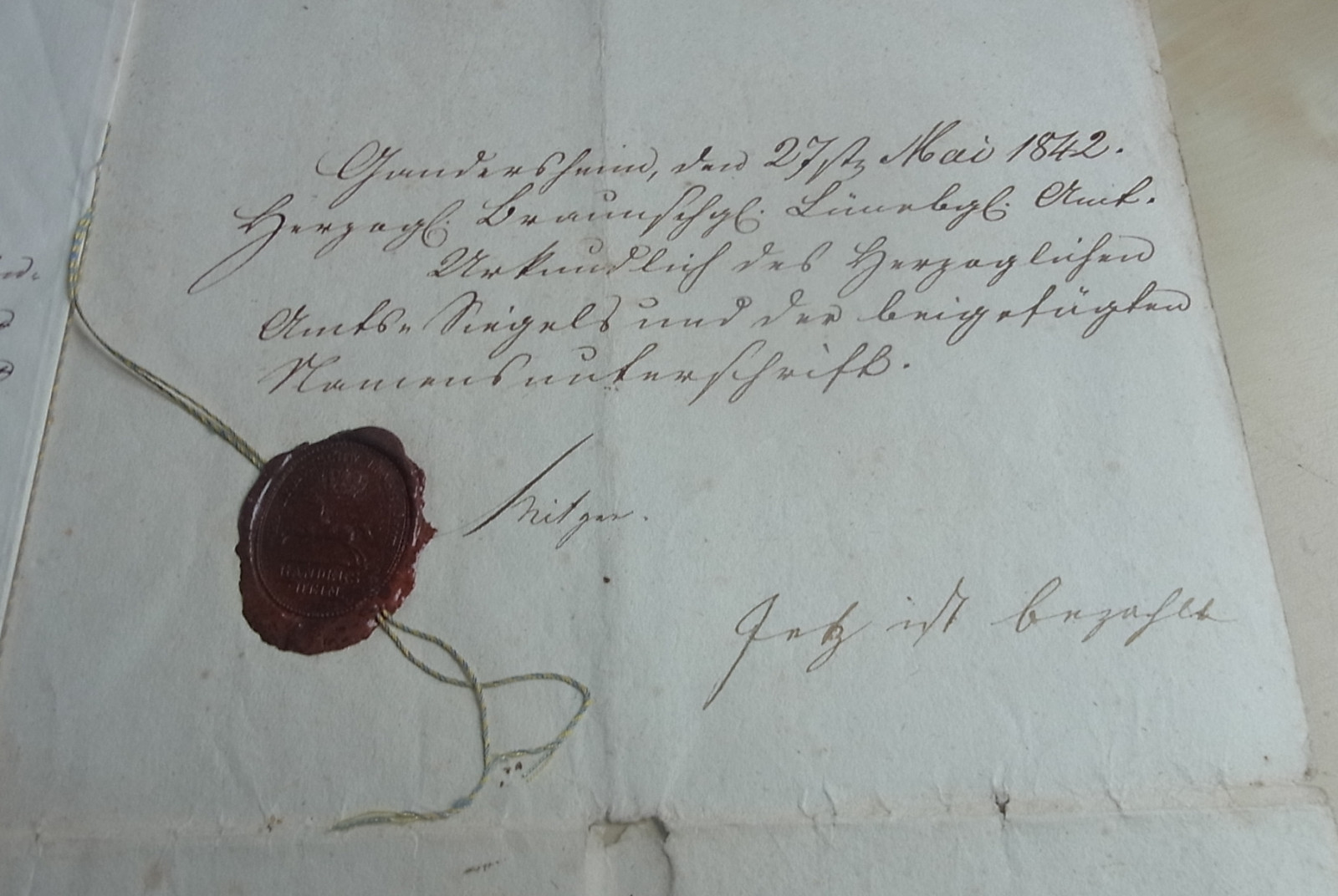

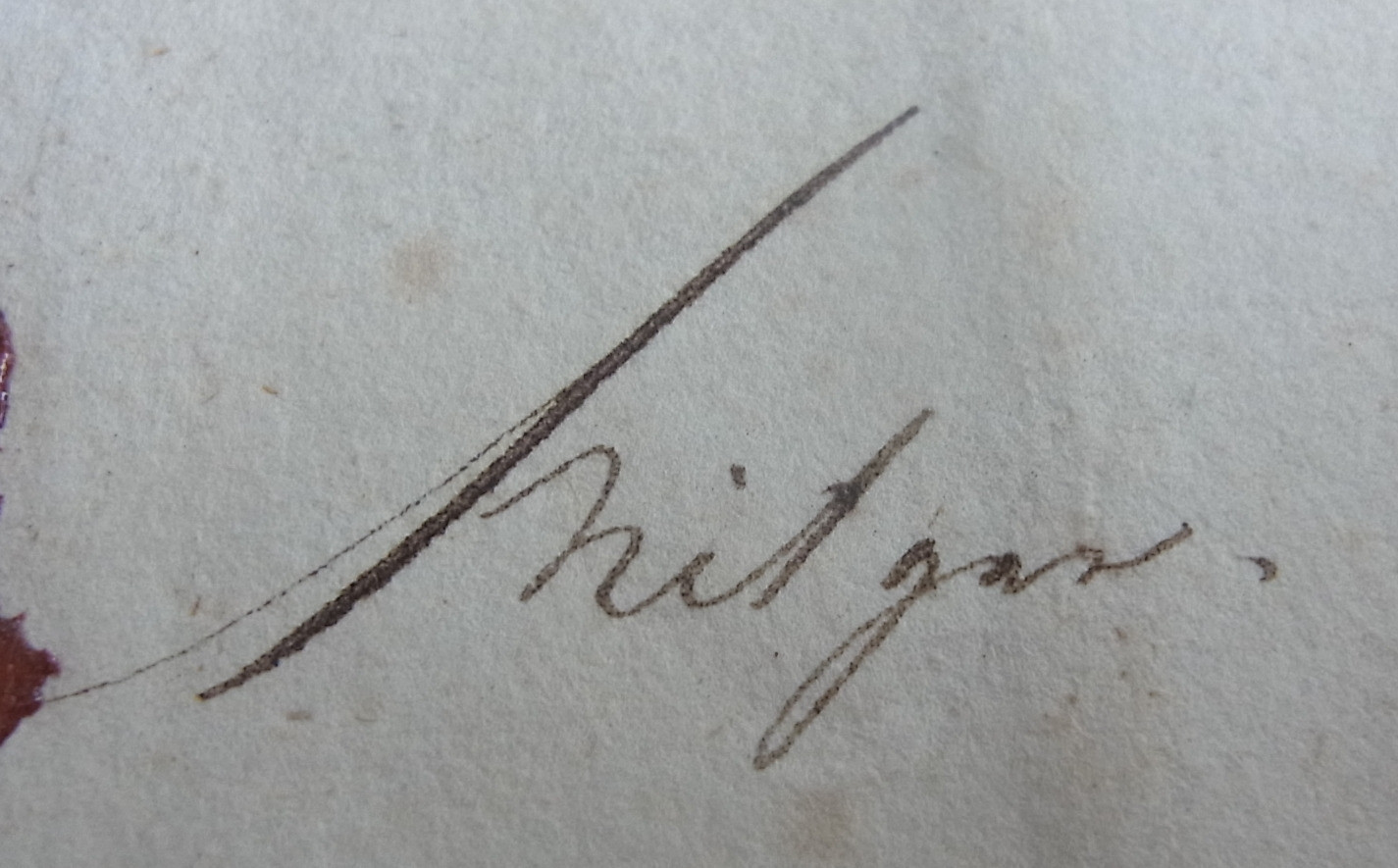

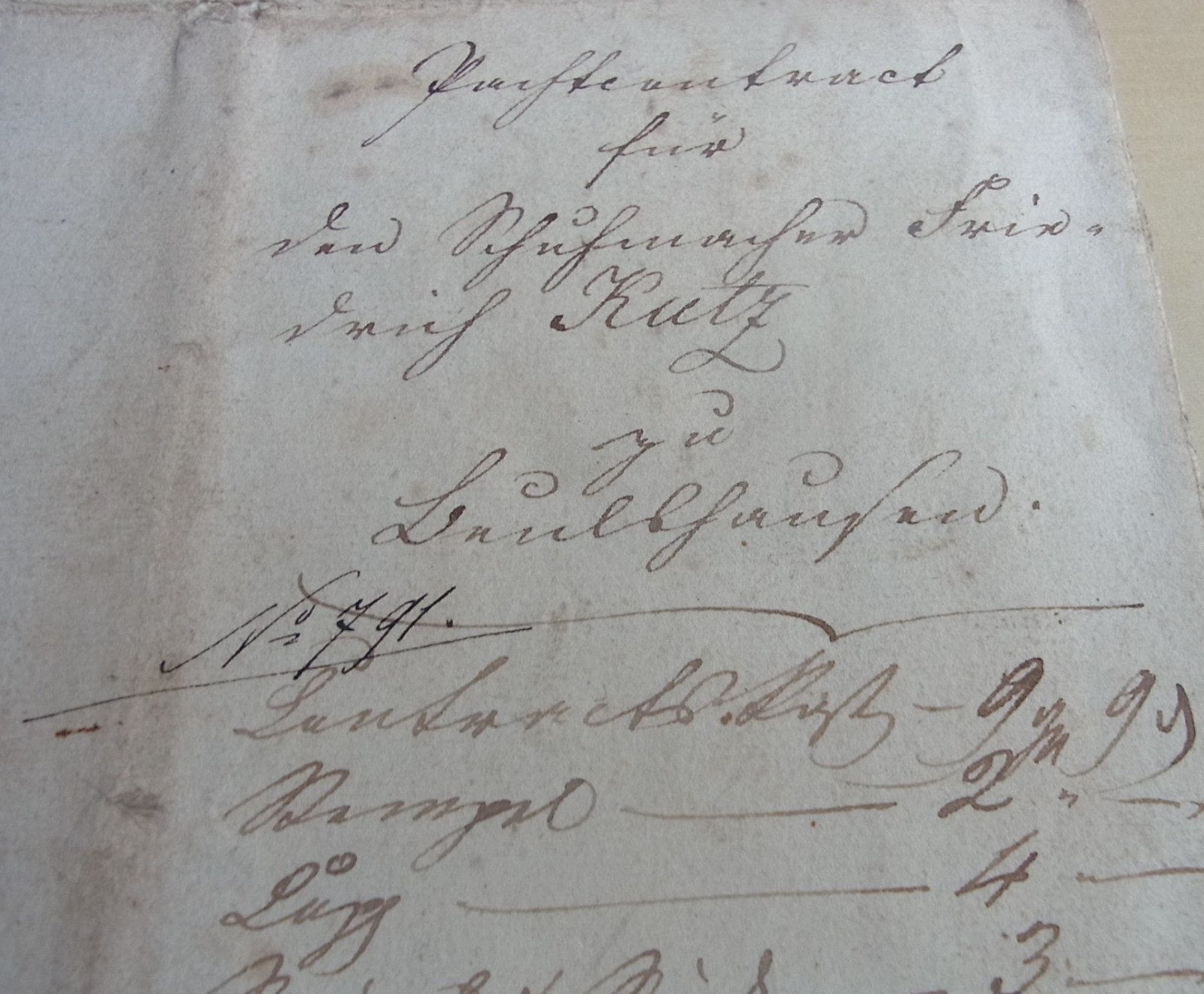
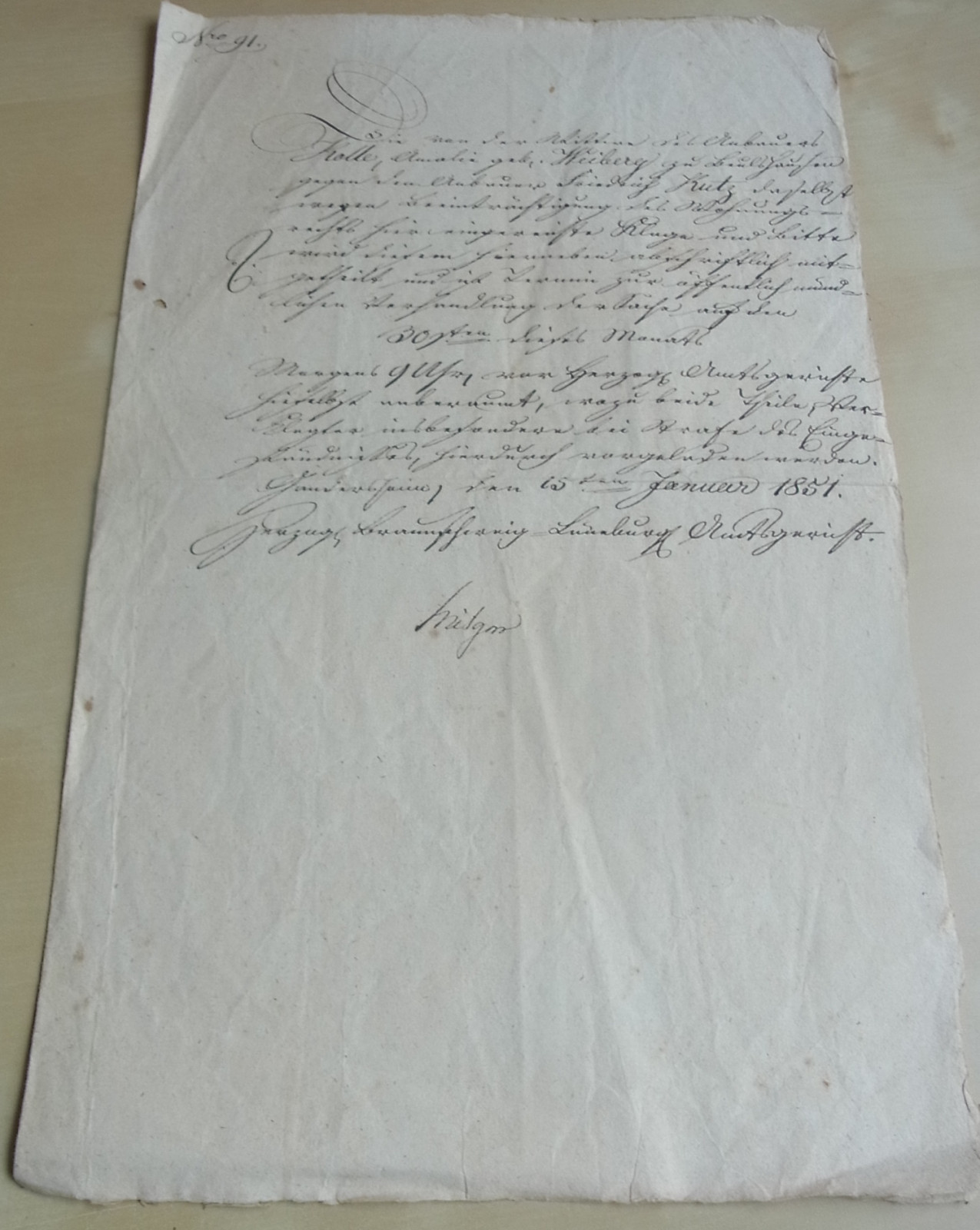






Mobile-friendly galleries at TRIXUM.DE
About the son of Ludwig August Mitgau (source: wikipedia):
Louis Mitgau, born August Wilhelm Carl Ludwig Mitgau, (b. July 1831 in Gandersheim; † 18 February 1912 in Braunschweig) was a German engineer and architect.
Life and work: Ludwig Mitgau was born the son of a magistrate in Gandersheim, which at that time belonged to the Duchy of Brunswick. From the 10th He attended a humanistic high school and then a Realgymnasium in Braunschweig.
In 1848 Mitgau began studying technical sciences and mechanical engineering at the Collegium Carolinum, the forerunner of today's Technical University of Braunschweig. After completing his studies, he worked, among other things, at the Ducal Brunswick State Railway and in the machine works of the Zorge iron and steel works. In the fall of 1854, at the instigation of the Braunschweig government, he went to Berlin to undergo further training in the Hoppesche Maschinenfabrik, followed in 1862 by a posting to the world exhibition in London.
on the 1st On April 1, 1869, the engineer entered the service of the city of Braunschweig and soon became "technical director of the municipal gas and water works". In 1874 he had an extension built for the gasworks in the street Am Alten Bahnhof. In the same year he was a board member of the Association of German Engineers (VDI). In 1881 Mitgau was commissioned by the city to develop proposals for improving the drinking water supply. From 1882 to 1884 he had the river waterworks in the railway park expanded. From 1886 to 1895, the modern sewage system of the city of Braunschweig was built according to his plans, with a pumping station in the Eichtal valley and the use of the Steinhof estate with the Braunschweig sewage treatment fields there for near-natural wastewater treatment. In 1888 a new building followed in Taubenstraße, where the headquarters of Braunschweiger Versorgungs-AG & Co. KG are still located today. on the 1st On April 1, 1888, Mitgau received a position as chief engineer for life. Because of his merits, he was given the title of "Baurathes" on August 8th. Awarded May 1897. Towards the end of the 19th At the end of the 19th century, the supply of drinking water to the city of Braunschweig deteriorated because its quality was constantly declining. The numerous sugar factories in the city and Duchy of Braunschweig discharged their waste water directly and untreated into the Oker, which flows through Braunschweig. In addition, the level of the Oker fluctuated greatly depending on the season. Mitgau and his engineer colleague Wilhelm Clauss therefore called for the water supply of the population to be secured via groundwater. In 1902, drilling according to Mitgau's plans in the area of the Dowesee finally led to the construction of the drinking and process water works on Bienroder Weg. The water tower on the Giersberg regulated the supply within the city. From then on, the old waterworks was used for emergencies.
Mitgau's work to improve water quality and supply and to dispose of urban sewage was at the end of the 19th century. It was so well known in the 19th century that the director of the Paris Civil Engineering Office had a brochure by Mitgau translated into French.
In 1901 Mitgau was retired. He died of a stroke in 1912 and was buried in the main cemetery in Braunschweig.
In 1859 Louis Mitgau had married Annette Hoffmann, daughter of the Oberhütteninspektor from Zorge, with whom he had two children, Louis († 1946) and Martha. The Mitgaustraße in the northern ring area of Braunschweig was named after him in his honour.
Fonts (selection)
Atlas containing the project for the eastern outskirts of the city. (= Canalisation of the city of Brunswick. Atlas). Zwissler, Wolfenbuttel 1877.
Report on the city cleaning schemes introduced in Berlin, Amsterdam, Rochdale, Manchester, Croydon, Leamington and Abingdon. Haering, Brunswick 1880.
The drainage systems and sewage fields (with 2 plans). In: Rudolf Blasius (ed.): Braunschweig in the year MDCCCXCVII. Festschrift for the participants in the LXIX meeting of German natural scientists and doctors. Meyer, Braunschweig 1897, pp. 352–362.
| Erscheinungsort | Gandersheim |
| Region | Europa |
| Material | Papier |
| Sprache | Deutsch |
| Autor | Ludwig August Mitgau |
| Original/Faksimile | Original |
| Genre | Recht |
| Eigenschaften | Erstausgabe |
| Eigenschaften | Signiert |
| Erscheinungsjahr | 1842 |
| Produktart | Handgeschriebenes Manuskript |